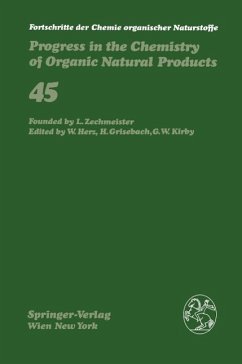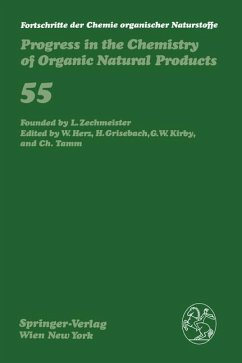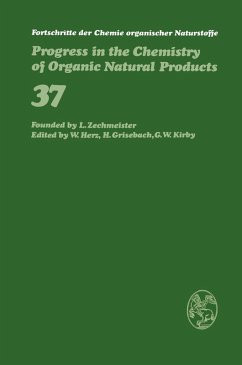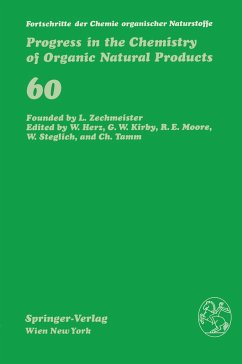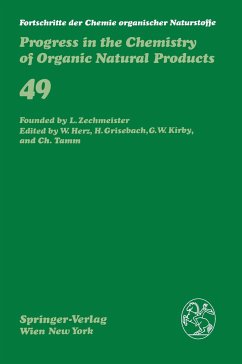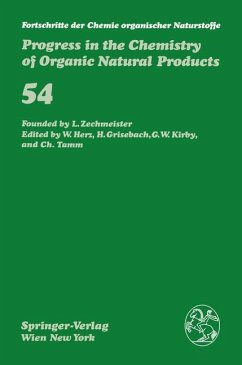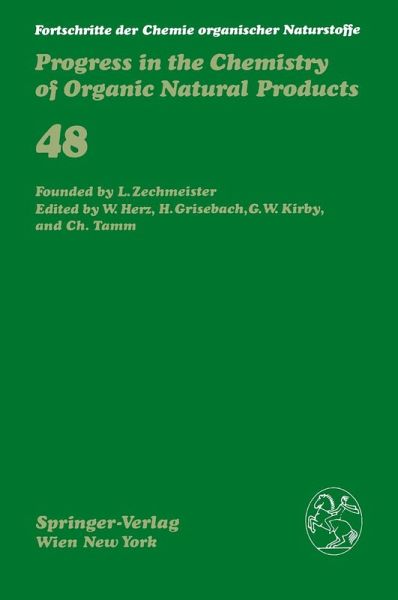
Fortschritte der Chemie organischer Naturstoffe / Progress in the Chemistry of Organic Natural Products

PAYBACK Punkte
20 °P sammeln!
The metabolic products of micro-organisms can be classified either as compounds of primary metabolic concern or else as secondary metabolites - substances which are apparently non-essential to the producing or ganism. Fungi have a remarkable capacity to produce such secondary metabolites, e. g. mycotoxins with a diverse array of structural and pharmacological properties (1). The present resurgence of interest in all aspects of mycotoxin research (2, 3) can be related to the impact of the hepatotoxins (aflatoxin, sporidesmin, and phomopsin), nephrotoxins (ochratoxin and citrinin), and dermal to...
The metabolic products of micro-organisms can be classified either as compounds of primary metabolic concern or else as secondary metabolites - substances which are apparently non-essential to the producing or ganism. Fungi have a remarkable capacity to produce such secondary metabolites, e. g. mycotoxins with a diverse array of structural and pharmacological properties (1). The present resurgence of interest in all aspects of mycotoxin research (2, 3) can be related to the impact of the hepatotoxins (aflatoxin, sporidesmin, and phomopsin), nephrotoxins (ochratoxin and citrinin), and dermal toxins (trichothecenes) on human and animal health. Some of the mycotoxins appear to act at the level of the central nervous system. Ergotism, the earliest known mycotoxicosis, that is a disease caused by mycotoxins, was attributed to the contamination of wheat by the parasitic neurotoxin-producing fungus, C/aviceps purpurea. These neuro toxins elaborated by C. purpurea are collectively calledthe ergot toxins (4). The neurotoxin, citreoviridin (1) which causes paralysis in the extremities of laboratory animals, followed sometimes by convulsions and respiratory arrest, has been implicated in acute cardiac beri-beri in Japan (5). Tremoring has not been associated with citreoviridin or the structurally related aurovertins (2) (6) and asteltoxin (3) (7); these compounds are therefore excluded from this review. However, verrucosidin (4) (8), a tremorgenic compound which structurally resembles (1)-(3), will be described later.





